“The surface finishing not only improves the appearance of metal parts but also increases their resistance to corrosion and wear to ensure durability and better performance.”
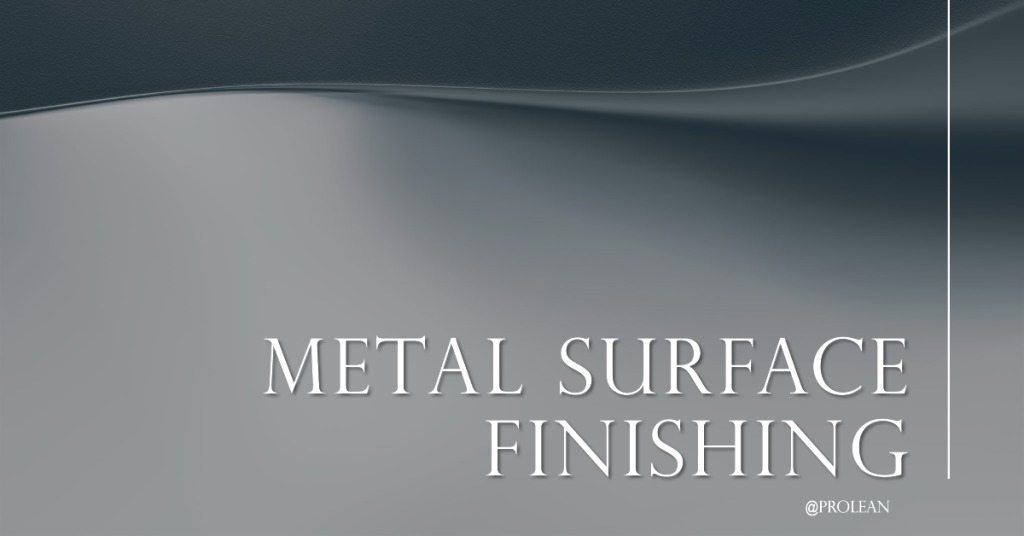
The manufactured metal parts or components contain burrs, debris, scratches, marks, and other defects, which can directly affect the part’s performance and longevity. Therefore, metal surface finishing is widely adopted to achieve high-quality metallic surfaces by removing defects or irregularities. Various Metal Surface Finishing Techniques are available for diverse metal and alloy surfaces, regardless of manufacturing method. However, this article will focus on the CNC-machined surfaces.
Furthermore, primary finishing techniques, benefits, applications, and other aspects of metal finishing will be elaborated. Ultimately, you will get tips on choosing the right metal finishing type/method.
Try Prolean Now!
Why is Surface Finishing Important for Metal Parts?
One main reason for applying surface finishing on metallic surfaces is to reduce the irregularities that can lead to more contamination risk. For example, scratches can build moisture easily and rust the surface quickly.
Next, some particular applications, like hydraulic rods or rotating components, require surfaces for seamless operations. So, finishing becomes essential for the functionality of such components.
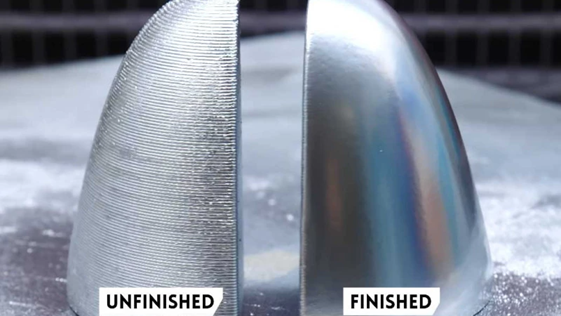
Before and after the surface finish
Subsequently, consumer items need an appealing appearance for marking purposes or to attract customers. So, surface finishing makes shiny and reflective surfaces with diverse color variations.
Furthermore, coating finishes like electroplating or hard coating can improve properties such as electrical conductivity, surface hardness, and strength.
- Aesthetic Appeal
- Increases Durability & Performance
- Prevents Contamination
- Enhanced Surface Properties
- Low-friction
Related: Why finishes are applied to a product?
Types of Metal Surface Finishing?
There are different ways to finish the metal surface. Among many mechanical, chemical, and electrical means are most common in the manufacturing & surface treatment industries. Each type of metal CNC machining finishes uses different mechanisms and equipment to produce the intended finish. At the same time, their compatibility depends on the properties of particular metals and requires specifications.
- Mechanical Surface Finishing
- Chemical Surface Finishing
- Electroplating of Metals
1. Mechanical Surface Finishing
The Basic principle of mechanical surface finishing involves applying abrasive mediums to the metal surface, which cut away minor material or defects to produce a uniform surface. The right kind and size of abrasive can achieve a reflective and mirror-like appearance. Common mechanical techniques of metal surface finishing include deburring, grinding, sandblasting, and polishing.
The mechanical finishing techniques are suitable for achieving surface finishes that correspond to specific surface finish symbols, they can be useful for CNC Surface Finish of less-complex shapes at low cost.
Table: Mechanical Surface Finishing Techniques for Metallic Parts
| Process | Process Description | Tools Used | Result | Ra Value |
| Deburring | The surface is fed on the deburring tool and the tool cuts the sharp edges and burrs. | Deburring machines, brushes, files | A uniform surface with a smooth transition | 10 to 25 µm |
| Grinding | An abrasive wheel rotates and levels the surface by cutting excess material and other defects. | Grinding machines and abrasive wheels | Reduces surface roughness and eliminates defects. | 0.8 to 6 µm |
| Sandblasting | Propelling abrasive media at high velocity towards the surface to clean and texture it. | Sandblasting machine, abrasive media (e.g., sand, glass beads) | Texturizes the surface, cleans off rust and contaminants, increases surface uniformity | 1.6 µm to 12.5 µm |
| Polishing | It involves repetitive grinding with finer and finer abrasives and buffing with soft, ultra-fine abrasive grains. | Grinding wheel, buffing wheels, and polishing compounds. | A smooth, mirror-like finish | As low as 0.1 µm |
2. Chemical Surface Finishing of Metals
This metal surface finishing process involves chemical treatment to alter the surface properties. Based on the substrate metal type and required results, chemical surface finishing processes use diverse chemical solutions.
Table: Chemical Surface Finishing Techniques for Metallic Parts
| Process | Description | Metals | Benefits | Application Examples |
| Chemical Conversion Coating | It involves applying a chemical solution that reacts with the metal surface to form a protective layer. E.g., chromate conversion for aluminum. | Aluminum, Steel | Corrosion resistance and paint adhesion | Aerospace & automotive parts, electronics casings, and outdoor items. |
| Pickling | Use of strong acids like sulfuric or hydrochloric acid to remove surface impurities, rust, scale, weld burns, and other imperfections. | All metals, particularly steel | Cleans and prepares the metal surface for further processing | Surface cleaning of welded steel structures, and preparation of forged metal parts for final machining. |
| Passivation | It involves treating stainless steel with citric or nitric acid solutions to build a chromium layer. | Stainless Steel | Improves wear and corrosion resistance | Food processing equipment, pharmaceutical vessels, marine hardware, etc. |
3. Metal Electroplating Finish
The electroplating finishing of metals uses an electrolysis process to plate the intended metal layer on the substrate surface. It involves an electrolysis setup with the substrate as an anode, plating mastering as a cathode, and an electrolytic solution containing free ions of plating material.
For example, zinc plating on steel iron surfaces includes zinc sulfate or other similar solutions as electrolytes. Meanwhile, the zinc is connected with the – terminal & iron workpiece with the + terminal. Once electricity is passed, the zinc irons are reduced from the cathode and deposited on the iron surface to form a strongly bonded zinc layer. That is how you can plate the superior metals on workpieces to finish the surface. The electroplating finish of metal and alloys not only reduces the roughness, but plating can add some strong properties to the substrate surface too.

Electroplating parts
Moreover, the thickness of the plating layer and the layer’s uniformity depend on factors like electrolysis current, time, concentration of ions in the electrolyte, and other processing parameters.
Anodizing
The anodizing finish converts the metal( mainly aluminum) surface into a decorative, durable, corrosion-resistant, anodic oxide finish. The anodizing process forms an integral layer of oxide on the metal surface. You can see anodized aluminum parts in automotive, electronics, and kitchenware.
Zinc Electroplating
Zinc is plated on iron, steel, or other metals to protect them from corrosion. The thin zinc layer from electroplating acts as a sacrificial coating. So, it corrodes before the underlying metal does. Furthermore, zinc plating is widely used in high-moisture applications.
Chrome Electroplating
Chrome electroplating involves the deposition of a thin layer of chromium onto a metal object. This plating is highly valued for its aesthetic qualities as it provides a bright and shiny finish.
Try Prolean Now!
How to Measure Surface Finishing Quality?
The Ra surface roughness is an indication of the finishing quality of metal surfaces. Its measurement, called “Ra value” in micrometers directly gives the ideal of finish. The lower the value, the more smooth the surface. The calculation of “Ra” involves different tools and equipment like CMM machines, micrometers, and gauges.
Moreover, surface roughness characterizes the surface irregularities and imperfections with numerical values. For example, Ra 6.3 μm means rough as-cast surface, whereas Ra 0.2-0.5 μm refers to a mirror-like finish.
Quality Confirmation with Comparision with Standard Samples
Furthermore, comparative finishing plates are also used in metal surface finish measurement, where standard plates (called surface finish gauges) with measured values are compared with workpieces to evaluate the quality. The finished parts are compared with the sample of pre-measured finishing surfaces of the same materials to validate the result. Meanwhile, manufacturers also use standard samples for machining methods like milling, turning, and routing.
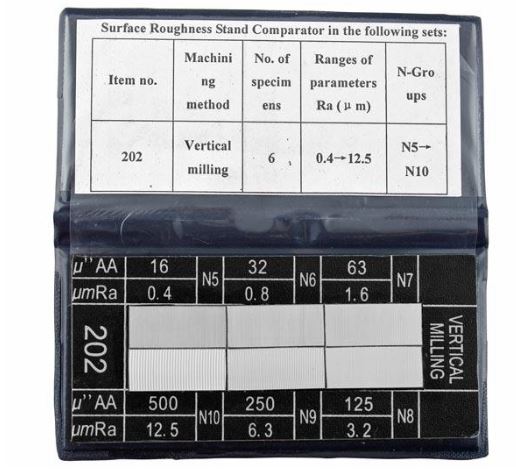
Surface finishing gauges
How to Choose the Right Metal Surface Finishing Technique?
Since there are many Metal surface finishing techniques, it is confusing and challenging to select the right one that can produce the required smoothness and appearance for your particular metal components. Consequently, the chosen techniques need to be cost-effective to maintain the overall economic feasibility of the final product.
Here are some factors you can consider while choosing the right types of metal finishes for your project;
| Factor | Considerations | Recommended Finishing Techniques |
| Material | Different metals respond differently to finishing processes. So, choose the technique that is compatible with your metal. |
|
| Corrosion Resistance | The moisture content and other environmental can affect the corrosion rate. |
|
| Wear Resistance | High-wear applications need surfaces that can withstand friction and abrasion. |
|
| Aesthetic Requirements | The consumer items require an attractive appearance |
|
| Cost Considerations | Budget constraints can influence the choice of finishing technique. |
|
Metal Surface Finishing at ProleanTech
We are a China-based manufacturing company with extensive surface finishing facilities. Our Machining Surface Finish services include mechanical, chemical, and electroplating metal finishes. Additionally, you can finish any machined metal or alloy at our factory, from stainless steel and aluminum to copper and titanium.
Furthermore, we can produce several metallic finishes, such as matte, glossy, reflective, and mirror-like. Whatever your application or requirements are, you can trust Proleantech for Machining Surface Finish service.
So, send us your design with the desired finishing specifications to get an accurate quote from our engineers!
Try Prolean Now!
Summing Up
Overall, the machining surface finish is essential, regardless of the application of the metal parts. If not for functionality or appearance, the parts require metal surface finishing to protect the parts and avoid the risk of low performance over time due to surface degradation or rust.
Moreover, the diverse options of finishing types and techniques allow the processing of any metal and alloys, complex shapes, and surface conditions. With the correct method, the surface can be customized to the desired specifications.
FAQs
What are the types of metal surface finishing?
Three main types of metal surface finishing are mechanical polishing, chemical conversion, and electroplating.
What is the difference between mechanical and chemical surface finishing of metals?
Mechanical surface finishing involves physical methods like grinding, sanding, or polishing, which mechanically alter the surface. On the other hand, chemical finishing uses chemical reactions to modify the surface.
What are the CNC machining surface finish options?
CNC machining surface finishes vary widely, including, bead blasting, anodizing, powder-coating, and electroplating.
Are surface-finished parts durable?
Yes, surface-finished parts are generally more durable. Surface finishing can significantly enhance a part’s resistance to corrosion, wear, and tear.

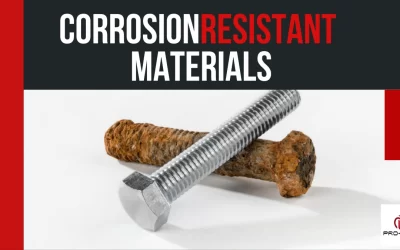
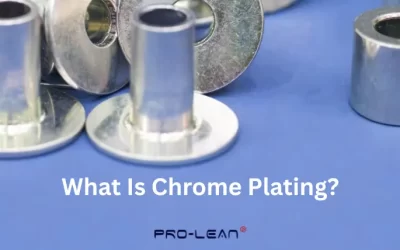
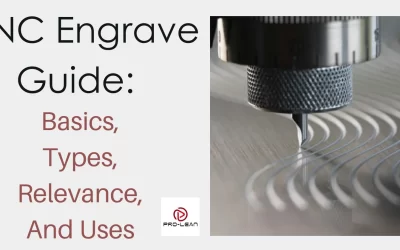
0 Comments